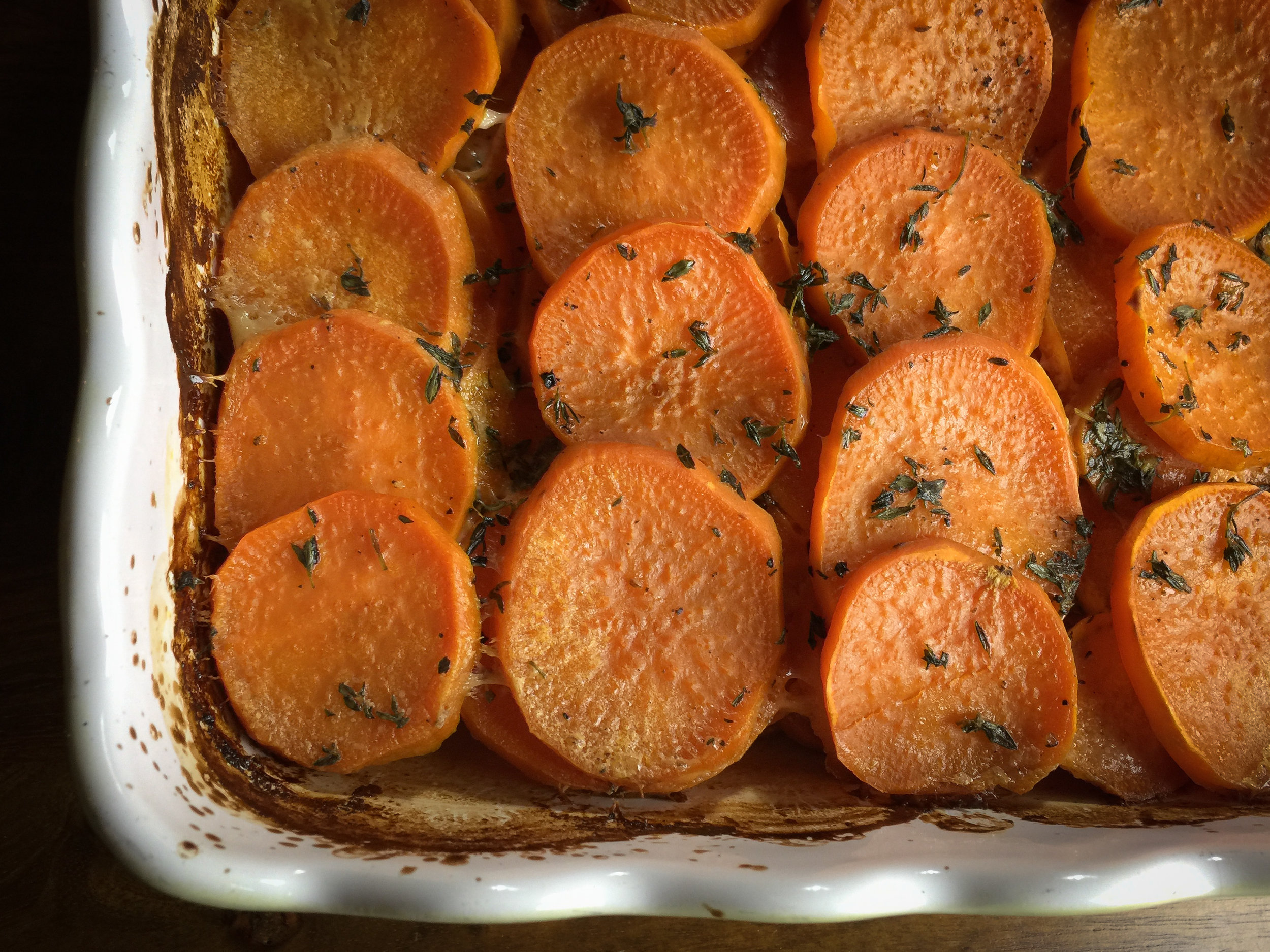Who says a Thanksgiving turkey has to be ginormous? This roasted beauty is less than 8 pounds.
Think small.
This year’s Thanksgiving mantra often leads to suggestions of roasting just a turkey breast, or skipping turkey in favor of a jazzy autumn vegan centerpiece, or ordering a complete Thanksgiving menu from a local restaurant.
All wonderful ideas! But if you can’t help but feel that Thanksgiving isn’t Thanksgiving without a turkey, and that leftovers are the best part of the holiday, consider this: You can roast a small turkey. How small? I found a flock at Whole Foods a couple weeks ago that were around 8 pounds, and less. A 10-pound bird may be considerably smaller than what you’re used to; you should be able to find that size pretty easily. You can make just one of two sides. You can skip the cranberry sauce, if you think it clashes with the wine.
Roasting a whole small (or smallish) turkey gives you the luxurious freedom to contemplate that monumental white-meat-vs.-dark-meat decision. (Have both!) You can gnaw on that wing bone, with all that fabulous crispy skin. You can wake up the next morning and eat leftover turkey for breakfast. You deserve it, as this epic annus horribilis crawls to a close.
Another thing you and your family or small party of pod-mates deserve: All the dark-meat-lovers at the table can treat themselves to an entire thigh or drumstick. When has that ever happened?
Then, in the days that follow, you can all enjoy turkey tetrazzini, or turkey soup — or use leftover turkey meat to make turkey enchiladas verdes (swap the turkey for chicken in this recipe). Or do all three, or a combination of endless other possibilities.
As long as there will be eat least two or three people eating that bird, it’s a fabulous (and even thrifty) way of keeping you all fed for a week.
About that crispy skin: I read somewhere this year that no one wants the skin, and that it’s never crispy. Perhaps they’ve never invited a dry-brined bird to the table!
Go ahead — help yourself to a drumstick! You deserve it.
Using the dry-brine method — rubbing it with salt two or three days in advance of roasting — leads to juicy, delicious meat and beautiful crisp skin.
[Hey, are you thinking of dry-brining for the first time? We just created a free mini-course to help you. ]
Another way to think small: You can make just one or two sides. Maybe one fancy, and one super-simple. Skip the made-from-scratch Parker House rolls and buy some frozen ones. Frozen peas are legit. Order a pie from a local bakery that’s struggling, or a pastry chef that’s launched pandemic pie pop-up.
This year, I made some tweaks to a savory sweet potato gratin I’ve been enjoying every Thanksgiving for ages, and I love it even better. The original version was layered sweet potato slices baked in lots of thyme-infused cream; I pulled back the cream a bit, set the slices on their side, rather than laying them flat – for more interesting texture and visual appeal – and added sage butter to the equation. It’s a pretty fabulous indulgence, one that’s just as spectacular the next day. And the next.
Of course we have other recipes for you. Here is a chestnut-porcini stuffing that you can customize as you like.
Here’s my favorite recipe for Brussels Sprout Leaves with Mirepoix and Pancetta, adapted from a Paul Bertolli recipe in Chez Panisse Cooking. This year, I tried slicing the Brussels sprouts thin instead of separating every leaf — way less time-consuming, and almost as good.
Here is our recipe for dry-brined turkey, for which you can use a small bird (or large).
And here’s a recipe for dry-brined turkey that includes a really good Cognac sauce.
Happy Thanksgiving. Stay healthy and safe.
And remember that holiday is a time for reflection and redress; the story about Native Americans celebrating joyfully with friendly pilgrims is a myth and a lie, as Brett Anderson’s excellent New York Times story explains.
Head over to our Cooks Without Borders Community Forum with any questions about Thanksgiving cooking; we’ll be happy to answer them.
RECIPE: Chestnut-Porcini Stuffing
RECIPE: Savory Sweet Potato Gratin with Sage-Butter and Thyme
RECIPE: Brussels Sprouts Leaves with Mirepoix and Pancetta
RECIPE: Roasted Turkey (Dry-Brined)
RECIPE: Dry-Brined Roast Turkey with Really Good Cognac Sauce










